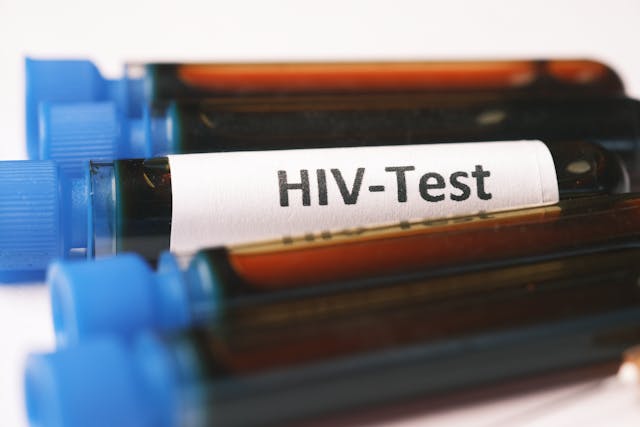-
 Read time : 4 mins
Read time : 4 mins(Photo by Towfiqu barbhuiya)
Have you ever thought about why HIV is still such a major health issue today? Despite many years of research and improved treatments, a cure for HIV has not been found. This article explains in simple terms how HIV infects the body, why curing it is difficult, and how advancements in health science give hope for a better life.What is HIV ?
HIV stands for Human Immunodeficiency Virus. This virus attacks a vital part of our immune system known as CD4 cells, commonly referred to as "fighter cells." These cells are necessary for good health because they help the body combat infections and diseases.
Without proper treatment, HIV weakens these CD4 cells over time, making the body susceptible to illnesses. If left untreated, this can progress to AIDS (Acquired Immunodeficiency Syndrome), which is a serious stage of HIV infection.How Does HIV Enter the Body?
HIV spreads through certain body fluids:
• Blood
• Semen
• Vaginal fluids
• Rectal fluids
• Breast milk
Common ways HIV is transmitted include unprotected sex, sharing needles, and from an HIV-positive mother to her child during birth or breastfeeding.
It is important to understand that HIV does not spread through casual contact like hugging, shaking hands, or sharing food. Recognizing this fact is essential for reducing the stigma around HIV.What Happens Once HIV Enters the Body ?
When HIV enters the bloodstream, it targets CD4 cells and takes control of their functions. The virus inserts its genetic material into these cells, turning them into machines that produce more HIV.
These new HIV particles then go on to infect additional CD4 cells, gradually weakening the immune system.Why Is HIV So Hard to Cure ?
1. HIV can hide by integrating its genetic material into the DNA of infected CD4 cells. This makes it difficult for the immune system and treatments to detect it. Even advanced medications face challenges in completely removing HIV once it has merged with the body's cells.
2. HIV creates hidden reservoirs in places like lymph nodes, the brain, and bone marrow. These reservoirs store the virus in a dormant state, preventing medications from effectively targeting and eliminating it. If treatment stops, the dormant virus can reactivate and spread.
3. HIV mutates quickly, which helps it adapt and become resistant to medications. This means that even if treatment is effective initially, the virus can change, reducing the medicine’s effectiveness over time.The Role of Antiretroviral Therapy (ART)
Although there is no cure for HIV yet, antiretroviral therapy (ART) has greatly improved the lives of those affected by the virus. antiretroviral therapy works by stopping HIV from replicating, keeping the virus at very low levels in the body. While it does not completely eliminate HIV, antiretroviral therapy enables people with HIV to live long, healthy lives by safeguarding their immune systems.SHOP NOW
Hope for the Future: Advances in Health Science
The battle against HIV continues, with researchers looking into new solutions:
• “Wake-Up” Strategies: Scientists are working on methods to reactivate dormant HIV in reservoirs, making it easier to target and eliminate.
• Gene Therapy: Researchers are exploring genetic changes that could make CD4 cells immune to HIV infection.
These developments provide hope that one day, a cure may be possible.Living a Full Life with HIV
Thanks to antiretroviral therapy and ongoing progress in health science, individuals with HIV can enjoy a high quality of life. This shows the impact of modern medicine in changing what was once a fatal diagnosis into a manageable condition. For those living with HIV, focusing on a healthy lifestyle that includes proper nutrition, regular exercise, and mental well-being is essential. By combining these habits with consistent antiretroviral therapy, individuals can lead fulfilling lives. HIV remains a formidable challenge due to its ability to hide, mutate, and create reservoirs within the body. However, advancements in health science and medical research bring hope for better treatment options and, eventually, a cure. Until then, living a healthy lifestyle and staying informed about treatments like ART can empower those living with HIV to thrive.You might like
Why HIV Has No Cure Yet: The Science Behind the Struggle
WORLD NEWS
Make Money
The Best Online Platforms for FreelancersFriday, January 3, 2025 - 21:30How To Easily Make Money Taking Online SurveysMonday, March 2, 2020 - 04:31The Importance of Financial LiteracySunday, March 1, 2020 - 03:35These are 5 Easiest Ways to Make Money OnlineSunday, March 1, 2020 - 03:30Fashion
Wednesday, March 1, 2023 - 03:30As the fashion industry constantly evolves, each year brings its own set of trends and influences. Let's explore the key differences ...INSPIRATION
amz-002
Detox Your Body
Friday, March 6, 2020 - 13:40Detox drinks have gained popularity in recent years as people seek ways to cleanse their bodies and support their weight loss journey.amz-001
Paserba - Life Inspiration, Health, Wealth and Quality Lifestyle
Recent posts
American Airlines Flight 5342 Collides with Helicopter Over Potomac River; Search and Rescue Operations IntensifyFriday, January 31, 2025 - 01:01DeepSeek's Rapid Rise: A New Contender in the AI IndustryMonday, January 27, 2025 - 20:01Why HIV Has No Cure Yet: The Science Behind the StruggleTuesday, January 14, 2025 - 12:31Choosing the Right Baby Car Seat: What You Need to KnowThursday, January 9, 2025 - 13:45How I Dropped Pounds Without Starving or OvertrainingWednesday, January 8, 2025 - 11:23
Tags



















